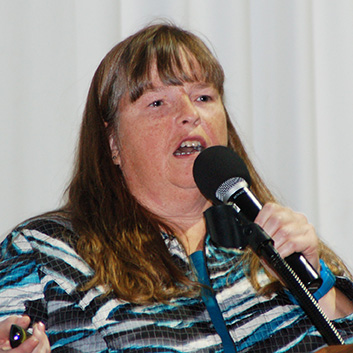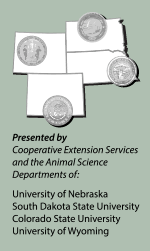Make Decisions that Make ‘Cents’
Retained ownership gives producers tools to make better management decisions.
LOVELAND, Colo. (Nov. 19, 2015) — More information lets you make better decisions. Simply put, cattlemen make money with fast-growing animals, heavy carcasses and high-quality carcasses, but do you know which calves do that for your operation? Julie Walker, South Dakota State University extension beef specialist, asked this question to attendees of the Range Beef Cow Symposium in Loveland, Colo., Nov. 17-19.
Retaining ownership gives cattlemen more data to make those management decisions that will add value to their operations, she said. It offers a baseline for the calves produced.

Julie Walker, South Dakota State University extension beef specialist.
She noted that the proportion of cattle marketed has shifted from being sold on a cash basis to mostly alternative marketing. This lends itself to calf value discovery programs, generally known as retaining ownership. These programs share feedlot performance, carcass characteristics and economic parameters with cattlemen.
She shared the profits by steers from five producers in a retained ownership program. In order, received profits per steer were $33.87, $33.47, $59.90, $21.97 and -$2.53. Walker shared data about average daily gain, ribeye area and hot carcass weight, all of which didn’t show much difference between the five groups of steers. The largest factor was difference in quality grades. In the same order, quality grades achieved were 80% Choice, 0% Choice, 100% Choice, 60% Choice and 20% Choice. While the second group was an outlier of receiving premiums with 0% Choice, she admitted that it is still important to look at individual animals.
More data helps make the decisions to improve quality. She shared what breeders in the retained ownership program A to Z Retained Ownership Inc. said about the information they received.
“Our cattle are pretty uniform, but the carcass value of our calves varied by up to $150. We didn’t realize there was that much difference,” she shared from one cattlemen.
Another breeder in the program said, “I’ve been surprised at the profitability variation between the high calf and the low calf.”
Not knowing the actual carcass information is like leaving money on the table, she concluded. Management decisions in the cow herd affect performance in the feedlot and carcass characteristics. Don’t forget that pre- and postweaning performance is important in making management decisions.
Editor’s Note: This summary was written under contract or by staff of the Angus Journal®, which retains the copyright. To request to reprint this article, contact Shauna Rose Hermel, editor, at 816-383-5270. PowerPoints are posted with permission of the presenter and may not be reproduced in whole or in part without the express permission of the presenter. Angus Journal claims copyright to this web site as presented. We welcome educational venues and cattlemen to link to this site as a service to their audience.
The Angus Journal's coverage of the event is made possible through collaboration with the event committee and sponsorship of LiveAuctions.tv. For questions about this site, or to notify us of broken links, click here. Look for additional coverage in the Angus Journal, the Angus Beef Bulletin, the Angus Journal Daily, the Angus Beef Bulletin EXTRA and Angus TV.


